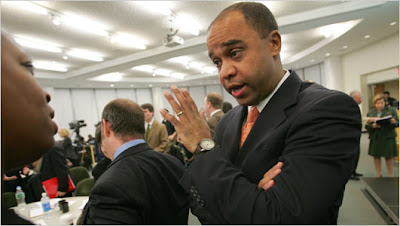The other day I was reading metropolitan policy briefings on the Brookings Institution site (It’s OK, you can say it: “Wow, David. You are a huge nerd.”) when I stumbled on this dinner party fun fact: more Americans who live below the poverty line live in suburbs than in cities.
Fascinating, right? Here’s the troubling part. The article goes on to say:
“America can’t ensure its leading place in the global economy unless we grapple with the problems and opportunities of our suburbs. Nonprofits, long focused on inner cities, need to reach out to poor families and immigrants in the suburbs. The federal government should support the production and preservation of affordable housing there.” (my emphasis added)
I respect the research the Brookings Institution conducts more than almost any other source out there, but they are dead wrong on this one.
Our public policy from approximately the end of WWII through now-ish encouraged suburban development. To say that it was the will of the people that drove suburbanization is to ignore how large of a role our public policies played in encouraging that notion.
Federally subsidized home loans allowed young families to live the “American Dream” (whatever that means…look for a post on that very topic sometime down the road). We the taxpayers funded the infrastructure that made living in the suburbs possible – the roads and highways, schools and sewers, water lines, power lines, garbage collection, police and fire protection, new parks, city halls, local government employees…all these things cost money.
When people spread out over a large area, the cost to implement and sustain all new versions of these tax-backed services skyrockets. Furthermore, in many cases they become redundant. As has been said somewhere else, it costs the same to plow a street whether 10 people live on it or 100 people do. The only difference is the number of people paying into the system that pays for the maintenance of that road – the more people paying in, the less expensive per tax-payer. Multiply that same scenario out for everything else our taxes pay for, and well, you can see how expensive sprawl can be.
Nevertheless, for the past 60 years or so, our public policy has made it easy to move out of the scary, dangerous city into the prosperous, safe, “good life” in the suburbs because we the taxpayer have funded the infrastructure necessary to do so.
I agree with the Brookings writers’ assertion that the social services to support those who have fallen on desperate times ought to be available in the suburbs, but it’s a mentality that’s like treating a gunshot wound with a Hello Kitty Band-Aid – it might make you feel better momentarily, but you’re probably still gonna die.
Brookings’ solution to six decades of bad public policy that incentivizes living in an inefficient and unsustainable way is to … um … bolster the public policy that incentivizes living in an inefficient and unsustainable way. Throwing money and social services at this problem will help those who need it temporarily, but, we need to look at how our policies encourage and discourage where people live.
Instead of incentivizing sprawl, our local, state, and federal governments need to incentivize filling in the existing beautiful housing stock we have here already. We need to find ways to incentivize healthy density and strong neighborhoods with a local focus. When we do, the development that occurs as a result will grow the tax base. The new-found efficiencies will allow us to provide the same or better services, but with less money. Doing more with less – that’s what will reverse our economic downturn.
So how do we do incentivize density? Tax incentives to those who revamp existing housing within a particular radius of downtown, maybe? A reexamination of our existing federal subsidies for first-time home buyers? Build the Cincinnati Streetcar? Reexamining zoning laws to allow or encourage higher density mixed-use buildings in areas? I’m all ears.




